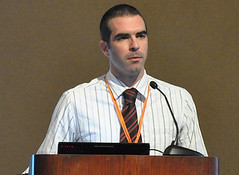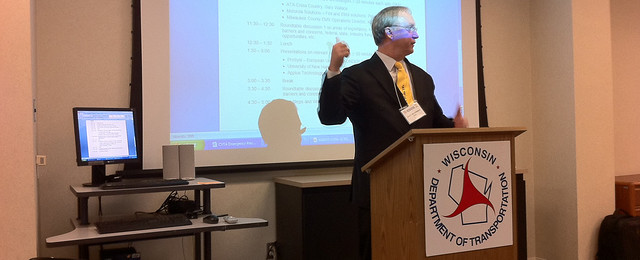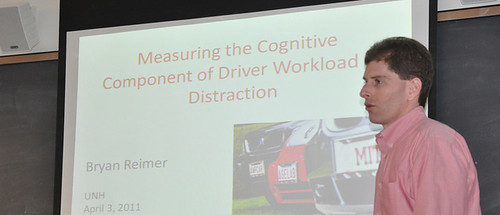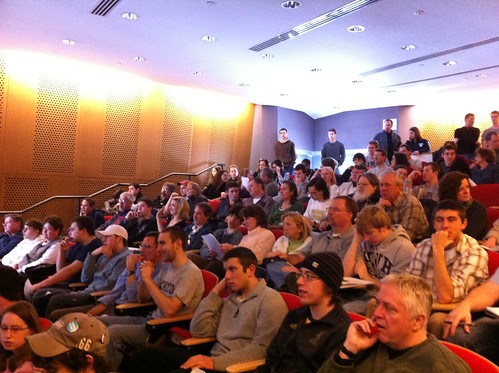Personal navigation devices (PNDs) are ubiquitous and primarily come in three forms: as built-in devices in vehicles, as brought-in stand-alone devices, or as applications on smart phones.
So what is next for PNDs? In a driving simulator study to be presented at MobileHCI 2011 [1], Zeljko Medenica, Tim Paek, Oskar Palinko and I explored two ideas:
- Augmented reality PND: An augmented reality PND overlays route guidance on the real world using a head-up display. Our version is simulated and we simply project the route guidance on the simulator screens along with the driving simulation images. Augmented reality PNDs are not yet available commercially for cars.
- Street-view PND: This PND uses a simplified version of augmented reality. It overlays route guidance on a sequence of still images of the road. The images and overlay are displayed on a head-down display. Google Maps Navigation runs on smart phones and can be used with street view.
The following video demonstrates the two PNDs.
Our findings indicate that augmented reality PNDs allow for excellent visual attention to the road ahead and excellent driving performance. In contrast, street-view PNDs can have a detrimental effect on both. Thus, while further research is clearly needed, it might be best if navigation with a street view PND was handled by a passenger and not by the driver.
References
[1] Zeljko Medenica, Andrew L. Kun, Tim Paek, Oskar Palinko, “Augmented Reality vs. Street Views: A Driving Simulator Study Comparing Two Emerging Navigation Aids,” to appear at MobileHCI 2011









